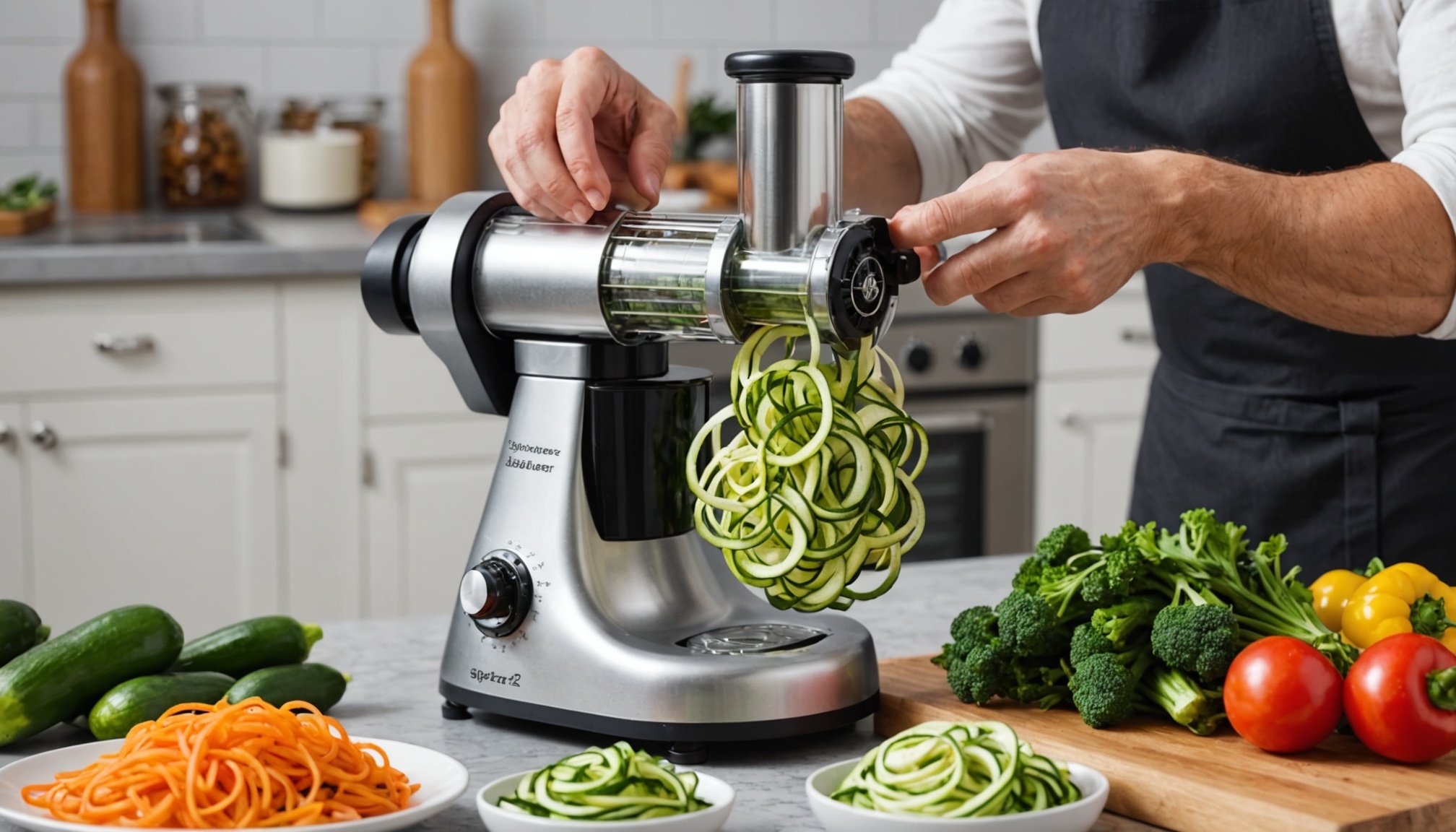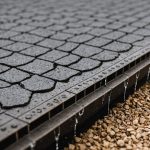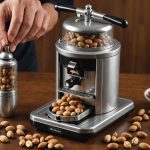When embarking on a raw food diet, vegetables become a focal point. Turning vegetables into noodles using a spiralizer is becoming increasingly popular. It’s a fun way to add more variety, color, and texture to your meals, making them more appealing. But what should you consider when choosing a vegetable spiralizer? This article will outline the most relevant features to look for when buying a spiralizer for your raw food diet.
The Importance of a Spiralizer in a Raw Food Diet
The raw food diet is all about consuming unprocessed and mostly or entirely uncooked foods. It’s a plant-based diet that includes raw fruits, vegetables, nuts, seeds, and sprouted grains. This diet is lauded for its health benefits, including weight loss and improved digestion.
This might interest you : How Can You Select a Steam Oven That Also Works Well for Baking Bread?
A vegetable spiralizer plays a critical role in a raw food diet. It’s a kitchen tool that cuts vegetables into thin, noodle-like strands. This can add a unique texture to salads, replace traditional pasta in dishes, or add an exciting twist to your typical stir-fry.
Zucchini, for instance, which is abundant in water and nutrients, can be easily spiralized into "zoodles", a spaghetti-like dish that is both delicious and healthy. A good spiralizer helps to diversify your diet and makes meals more enjoyable. It’s an essential tool for anyone looking to incorporate more raw foods into their diet.
Also to see : What Attributes Are Crucial in a Rice Cooker for Sticky Rice Preparations?
Types of Spiralizers
When it comes to choosing the right spiralizer, you’ll first need to consider the different types available. There are three main types: handheld, tabletop, and electric.
Handheld spiralizers are the most compact and inexpensive. They work similarly to a pencil sharpener, where you twist the vegetable into the cutting blades. However, they require more effort and time, especially when processing harder vegetables.
Tabletop spiralizers are usually larger and more powerful. They come with a crank handle and suction feet for stability. Some even come with multiple blade options, allowing for different noodle shapes and sizes.
Electric spiralizers, as the name suggests, use electricity to do the work for you. They are the fastest and easiest to use but tend to be the most expensive. They are ideal if you frequently spiralize vegetables or have difficulty using manual devices.
Blade Quality and Versatility
A key feature to consider when purchasing a spiralizer is the quality of the blades. The blades should be sharp and made from sturdy materials like stainless steel. Dull or poorly made blades will make spiralizing a chore rather than a joy.
It’s also beneficial if the spiralizer comes with a variety of blade options. Different blades will enable you to create different shapes and thicknesses, from thin, angel-hair noodles to thicker, curly fries. This feature adds versatility to your meals, making the raw food experience more enjoyable.
Ease of Use and Cleaning
Given that you’ll be using your spiralizer regularly, it’s essential to consider how easy it is to use and clean. Some models can be tricky to assemble and disassemble, which can be a hassle if you’re in a hurry. Look for spiralizers that are easy to set up and have parts that can be removed easily for cleaning.
Many spiralizers are dishwasher safe, but you should always check the manufacturer’s instructions. If not dishwasher safe, ensure the spiralizer is easy to clean by hand, especially the blades, which can be tricky due to their sharpness.
Size and Capacity
Lastly, you should consider the size and capacity of the spiralizer. If you have limited kitchen space, a compact, handheld spiralizer might be more suitable. But if you spiralize large quantities of vegetables at once, a tabletop or electric spiralizer with a larger capacity will be more efficient.
Also, consider the size of the vegetables that the spiralizer can accommodate. Some models are only suitable for smaller vegetables, while others can handle larger ones such as butternut squash.
In conclusion, when choosing a vegetable spiralizer for a raw food diet, it’s essential to consider the type of spiralizer, the blade quality and versatility, ease of use and cleaning, and size and capacity. With the right spiralizer, consuming raw foods can become a delightful, tasty experience that contributes to your overall health.
Maintenance and Durability Considerations
When selecting a vegetable spiralizer, it’s crucial to consider its durability and maintenance requirements. You want a tool that will withstand frequent use and last for years, especially if you’re committed to a raw food diet.
Durability often boils down to the materials used in the product’s construction. Spiralizers with stainless steel blades are often the most durable. Stainless steel is resistant to rust and corrosion, which ensures the blades stay sharp and effective over time. The body of the spiralizer should also be sturdy, ideally made of high-quality plastic or metal.
Maintenance, on the other hand, involves the upkeep necessary to keep the spiralizer in optimum working condition. This includes blade sharpening, regular cleaning, and possible part replacements. Some spiralizers come with a blade sharpener, adding convenience.
The replacement of parts, such as blades or a hand crank, should also be a consideration. The availability and cost of these parts can significantly impact the long-term value of the spiralizer.
For users planning to spiralize a variety of vegetables, from zucchini noodles to sweet potato or butternut squash, durability and easy maintenance are crucial factors that should not be overlooked.
Incorporating Spiralized Vegetables into Your Raw Food Diet
Once you’ve chosen the perfect vegetable slicer, the fun part begins. Spiralizing vegetables can transform your raw food diet, making mealtime exciting and creative.
Imagine converting zucchini into thin, delicate noodles, then tossing them with lemon juice, sesame seeds, and a hint of olive oil for a refreshing and low-calorie salad. Or spiralize sweet potato into thicker, curly strands, creating a fantastic base for a raw vegan dish packed with nutrients.
Even more dense vegetables like butternut squash can be transformed into satisfying noodles. Pair them with a raw tomato sauce, and you’ve got a raw version of the classic spaghetti dish. Brussels sprouts can also be spiralized for a crunchy, nutritious addition to your salads.
The preparation time of these vegetable noodles is often less than cooking conventional pasta. Plus, they can be stored in an airtight container in the fridge for several days, promoting efficient meal planning. With a vegetable slicer, the possibilities are as limitless as your creativity!
Conclusion
A vegetable spiralizer is a game-changer for those following a raw food diet. It allows for the transformation of simple vegetables into exciting, nutritious dishes. When choosing a spiralizer, it’s essential to consider the type, blade quality, versatility, ease of use and cleaning, size, capacity, durability, and maintenance.
Remember to look for models with stainless steel blades for durability and a variety of spiralizer blade options for versatility. Ease of use can greatly enhance your food preparation experience, and the right size will depend on your kitchen space and the quantity of food you usually prepare.
Once you have the perfect spiralizer, you’re well on your way to creating a plethora of vibrant, healthful, raw meals. From zucchini noodles to spiralized butternut squash, your diet will be anything but boring. Happy spiralizing!











